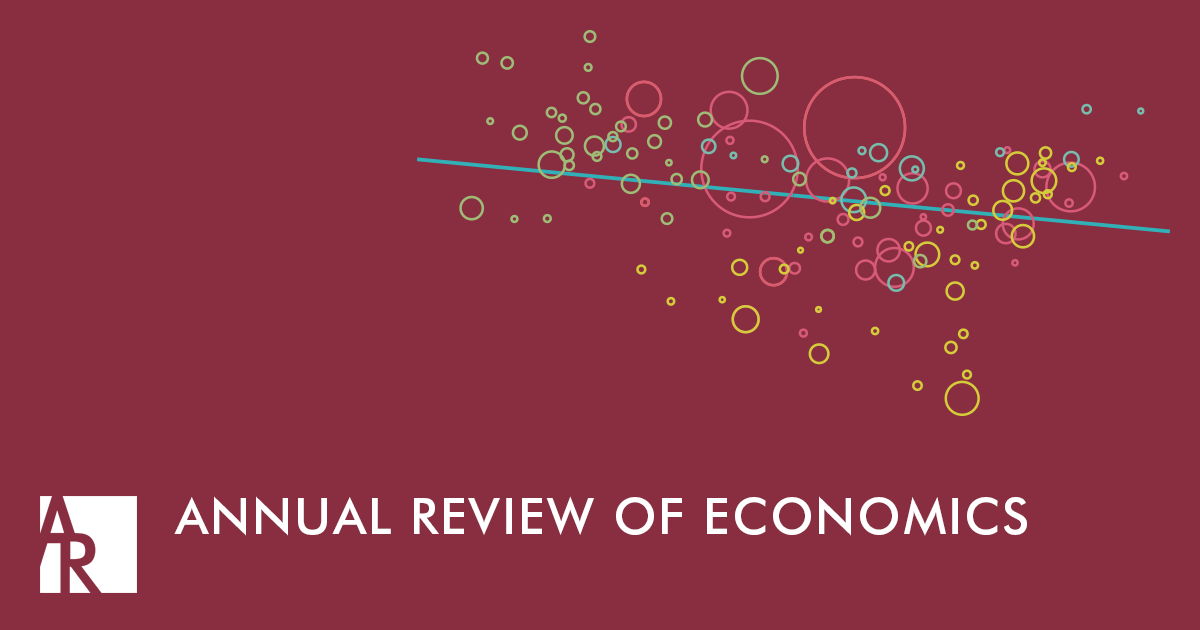Annual Review of Economics
Vol. 6:333-362 (Volume publication date August 2014)
First published online as a Review in Advance on February 21, 2014
https://doi.org/10.1146/annurev-economics-080213-041050
JEL codes: E21, E22, E24, F43, H11, H55, I31, I38, J11, J13, J31, L52, N15, N45, N65, O11, O14, O33, O38, O41, O43, O47, O53, P31, Q53
Abstract
A recent wave of economic research has studied the transformation of China from a poor country in the 1970s to a middle-income economy today. Based on this literature, we discuss the factors driving China’s development process. We provide a historical account of China’s rise, fall, and resurgence. We then discuss the stylized facts associated with China’s growth process and review a comprehensive theory of its economic transition. Finally, we discuss China’s future. In particular, we review some recent studies about technological and politico-economic factors that may foster or hinder its future economic performance.
Keywords
- Figures
Previous Article Next Article
- Related Articles
Eric S. Maskin
Vol. 11, 2019
Abstract – FiguresPreview
Abstract
This article reviews Kenneth Arrow’s seminal work in economics, giving special emphasis to his contributions to social choice theory and general equilibrium theory.
- Figures
Figure 1: Two social indifference curves in utility space.
Figure 2: A reversal of the social ranking.
Susan Athey and Guido W. Imbens
Vol. 11, 2019
Abstract – FiguresPreview
Abstract
We discuss the relevance of the recent machine learning (ML) literature for economics and econometrics. First we discuss the differences in goals, methods, and settings between the ML literature and the traditional econometrics and statistics literatures. …
- Figures
Figure 1: (a) Euclidean neighborhood for k-nearest neighbor (KNN) matching. (b) Tree-based neighborhood.
Figure 2: (a) Different trees in a random forest generating weights for test point . (b) The kernel based on the share of trees in the same leaf as test point .
Figure 3: Predictions from random forests and local linear forests on 600 test points. Training and test data were simulated from , with having dimension (19 covariates are irrelevant) and errors . …
Seema Jayachandran
Vol. 7, 2015
Abstract – Figures – Supplemental MaterialsPreview
Abstract
Is the high degree of gender inequality in developing countries—in education, personal autonomy, and more—explained by underdevelopment itself? Or do the societies that are poor today hold certain cultural views that lead to gender inequality? This …
Supplemental Materials
Supplemental Appendix
- Figures
Figure 1: Gender gaps in (a) education and (b) life expectancy. GDP per capita is the purchasing power parity–adjusted value in the year the outcome (the vertical-axis variable) is measured, express…
Figure 2: (a) Gender gap in labor force participation and (b) attitudes about women in the labor force. GDP per capita is the purchasing power parity–adjusted value [from World Development Indicator…
Figure 3: Attitudes toward (a) gender-based violence and (b) female decision-making power. GDP per capita is the purchasing power parity–adjusted value [from World Development Indicators (WDI)] in t…
Figure 4: Gender gaps in (a) control over one’s life and (b) life satisfaction. GDP per capita is the purchasing power parity–adjusted value [from World Development Indicators (WDI)] in the year the…
Figure 5: Sex ratio at birth in China and India, 1962–2012. Data are from World Development Indicators.
Figure 6: (a) Sex ratio at birth and (b) desire for sons. GDP per capita is the purchasing power parity–adjusted value [from World Development Indicators (WDI)] in the year the outcome is measured, …
David H. Autor, David Dorn, Gordon H. Hanson
Vol. 8, 2016
Abstract – FiguresPreview
Abstract
China’s emergence as a great economic power has induced an epochal shift in patterns of world trade. Simultaneously, it has challenged much of the received empirical wisdom about how labor markets adjust to trade shocks. Alongside the heralded consumer …
- Figures
Figure 1: Manufacturing share of US nonfarm employment (1939–2015). Source: FRED Economic Data (https://research.stlouisfed.org/fred2/graph/?g=1Gor).
Figure 2: China’s share of world manufacturing activity (1990–2012). Source: World Development Indicators (http://databank.worldbank.org/data/reports.aspx?source=world-development-indicators).
Figure 3: The evolution of China’s imports and exports. (a) Exports minus imports as a share of gross domestic product (GDP) for China. (b) Revealed comparative advantage (RCA) for China. Source: Worl…
Figure 4: Change in China–US net import penetration in detailed manufacturing industries (1991–2007).
Figure 5: The United States’ and China’s current account balances [% of gross domestic product (GDP)] for 1985–2012. Source: World Development Indicators (http://databank.worldbank.org/data/reports.as…
Figure 6: Geographic exposure to trade shocks at the CZ (commuting zone) level. (a) Quartiles of unconditional exposure. (b) Quartiles of exposure conditional on manufacturing employment share.
Figure 7: Effect of a $1,000-per-worker increase in imports from China on dollar change of annual government transfer receipts per capita in commuting zones (1990–2007). Abbreviations: SSA, US Social …
Figure 8: Persistence of trade exposure since 1991. The figure plots regression coefficients and 90% confidence intervals obtained from 2×16 regressions that relate the 1991–2007 trade exposure of a w…
Hilary Hoynes and Jesse Rothstein
Vol. 11, 2019
Abstract – Figures – Supplemental MaterialsPreview
Abstract
We discuss the potential role of universal basic incomes (UBIs) in advanced countries. A feature of advanced economies that distinguishes them from developing countries is the existence of well-developed, if often incomplete, safety nets. We develop a …
Supplemental Materials
Supplemental Figure 1
- Figures
Figure 1: Growing interest in universal basic incomes as evidenced in newspaper usage, showing annual uses of the terms “universal basic income” and “basic income” in the New York Times.
Figure 2: An illustrative, hypothetical transfer program.
Figure 3: Comparing a universal basic income (UBI) to other existing programs.
Figure 4: Average household transfers by family type and program. Data from authors’ tabulations of the 2017 Current Population Survey Annual Social and Economic Supplement (US Census Bur. 2017).
Figure 5: Average household transfers by family type and decile of after tax and transfer income. Data from authors’ tabulations of the 2017 Current Population Survey Annual Social and Economic Supple…
Figure 6: Average household transfers by family type and earnings decile. Data from authors’ tabulations of the 2017 Current Population Survey Annual Social and Economic Supplement (US Census Bur. 201…
Figure 7: Distribution of household transfers by family type and earnings decile. Data from authors’ tabulations of the 2017 Current Population Survey Annual Social and Economic Supplement (US Census …
See More

Continue lendo em https://www.annualreviews.org/doi/full/10.1146/annurev-economics-080213-041050

